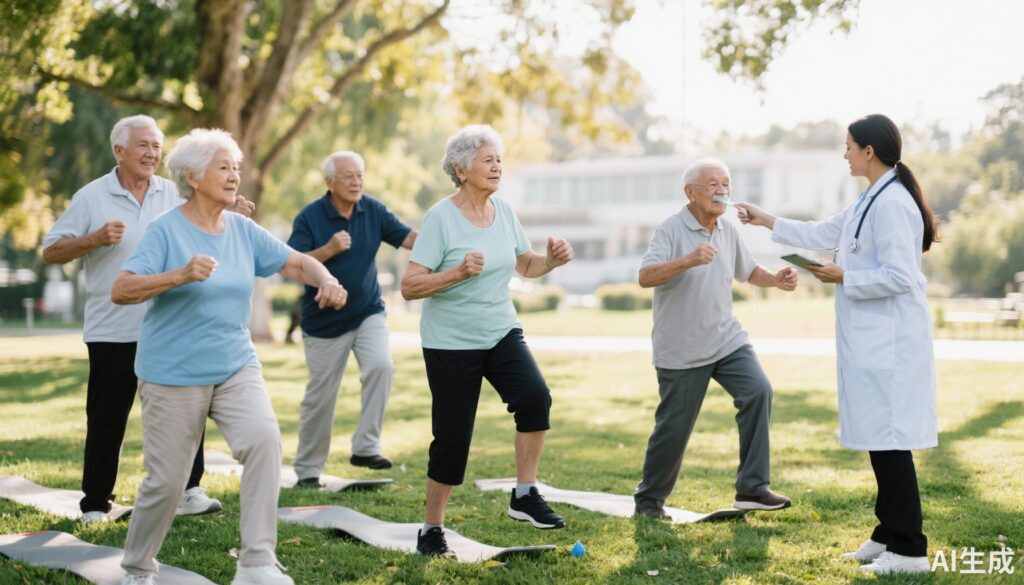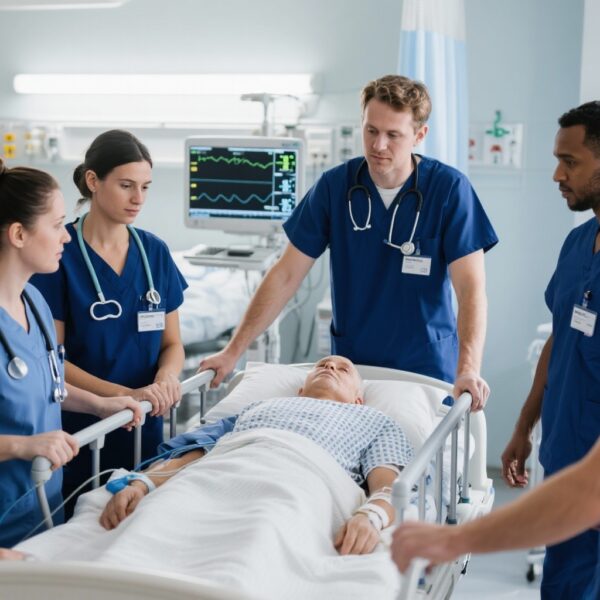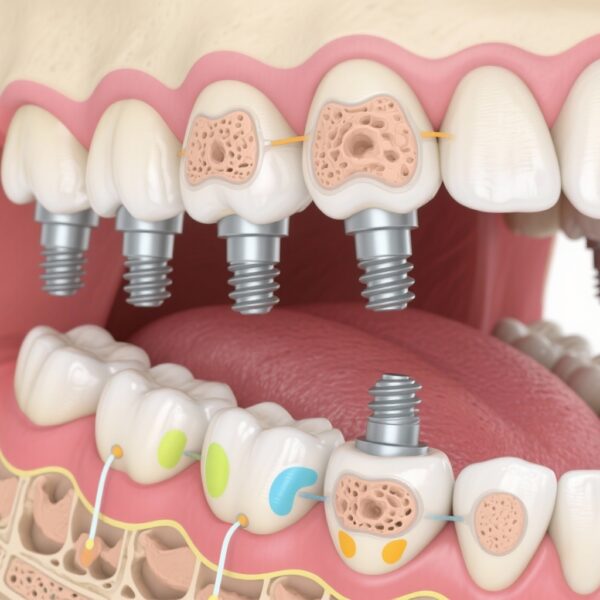Introduction and Objectives
Pulmonary rehabilitation (PR) constitutes the cornerstone of chronic obstructive pulmonary disease (COPD) management, improving exercise capacity, symptoms, and quality of life. Despite these benefits, maintaining gains after the typical 8-to-12-week PR programme remains challenging, with patients often reverting to sedentary behaviors. Increasing physical activity is recognized as a key factor in prolonging PR benefits and improving long-term outcomes. The PICk UP programme was developed as a personalised, community-based physical activity intervention aiming to bridge this transitional gap. This randomised controlled trial investigated whether the PICk UP programme can sustain physical activity levels and other health-related benefits six months after completion of PR in people with COPD.
Study Background
COPD imposes a substantial burden worldwide due to chronic airflow limitation, frequent exacerbations, and disability leading to reduced quality of life. Pulmonary rehabilitation improves exercise tolerance, reduces dyspnea, and enhances health status; however, its maintenance post-intervention is notoriously poor. Declining physical activity after PR is linked to increased morbidity and mortality in COPD. Interventions extending beyond traditional center-based PR to encourage regular community activity have promise, yet high-quality evidence remains sparse regarding their efficacy and implementation.
Study Design
This was a multicentre, assessor-blinded, randomised controlled trial enrolling people with COPD who had recently completed a standard 12-week PR programme. Participants were randomized to either the experimental group receiving a personalised six-month community-based physical activity programme (PICk UP) or to a control group receiving usual standard care with no structured activity intervention.
The primary outcome was daily time spent in moderate to vigorous physical activity (MVPA) measured objectively. Secondary outcomes included daily step counts, responses to the brief physical activity assessment tool, sedentary behavior, functional status measured by the one-minute sit-to-stand test, peripheral muscle strength, balance, symptom severity, emotional state, health-related quality of life, frequency of exacerbations, and healthcare utilization. Assessments occurred immediately after PR completion and at three and six months post-intervention. Both intention-to-treat and per-protocol analyses were performed using linear mixed models to evaluate efficacy and effectiveness.
Key Findings
Sixty-one participants were included (32 in experimental, 29 in control), balanced in baseline characteristics: mean age approximately 70 years, predominantly male (84%), with moderate airflow limitation (mean FEV1 ~57% predicted).
The PICk UP programme led to statistically significant improvements in physical activity metrics at six months compared to controls. Specifically, time spent in MVPA, daily step counts, and physical activity questionnaire scores all showed favorable changes (P<0.05). Furthermore, functional capacity measured by the one-minute sit-to-stand test improved significantly in the intervention group.
However, no significant differences were observed between groups in other secondary endpoints, including sedentary behavior, peripheral muscle strength, balance, symptom burden, emotional well-being, health-related quality of life indices, or exacerbation rates and healthcare use.
These results highlight that the community-based physical activity intervention effectively sustains enhanced physical activity levels and functional performance but does not extend to broader clinical or quality of life benefits within the six-month timeline.
Expert Commentary
This trial provides important evidence supporting personalised, community-based physical activity programmes to maintain activity gains after supervised PR in COPD. The sustained increase in MVPA and improved sit-to-stand performance addresses a critical challenge in COPD management—the rapid decline in physical activity post-PR.
Nonetheless, the lack of broader secondary benefits suggests that increasing physical activity alone may be insufficient to affect symptoms, muscle strength, or psychosocial outcomes over six months. It is possible that longer interventions, additional behavioral or pharmacologic adjuncts, or targeting of specific subgroups may be needed to achieve these impacts.
Limitations include modest sample size and predominately male participants, which may affect generalizability. Objective activity monitoring strengthens data validity, and blinded assessment reduces bias. Future research should explore optimisation of programme components, longer follow-up, and integration within routine COPD care pathways.
Conclusion
The PICk UP programme, as a personalised community-based physical activity intervention, effectively sustains increased physical activity and functional exercise capacity up to six months following pulmonary rehabilitation in patients with COPD. While other clinical and psychosocial outcomes did not improve, this approach addresses an important gap in COPD management, offering a feasible strategy to prolong PR benefits. Further studies are warranted to expand benefits and to confirm long-term effects.
Funding and Clinical Trials Registration
Details of funding sources and clinical trial registrations were not provided in the referenced study publication.
References
1. Rebelo P et al. Beyond pulmonary rehabilitation: can the PICk UP programme fill the gap? A randomised trial in COPD. Pulmonology. 2025;31(1):2416827. doi:10.1016/j.pulmoe.2024.04.001
2. Spruit MA, Singh SJ, Garvey C, et al. An official American Thoracic Society/European Respiratory Society statement: key concepts and advances in pulmonary rehabilitation. Am J Respir Crit Care Med. 2013;188(8):e13-e64.
3. Watz H, Pitta F, Rochester CL, et al. An Official European Respiratory Society Statement On Physical Activity In COPD. Eur Respir J. 2014;44(6):1521-1537.



